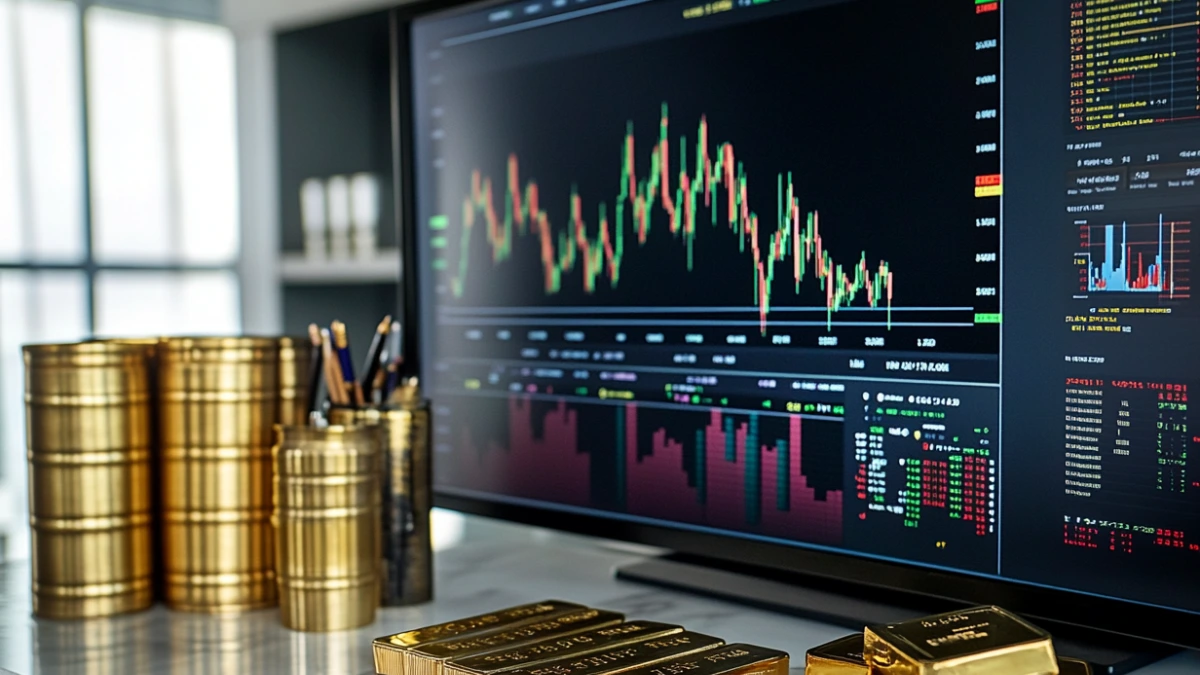Crude Oil Technical Analysis – May 28, 2025
Crude Oil (CL) is currently trading within a well-defined consolidation range, with price action oscillating between two key zones of interest.

The market has shown repeated reactions around the green demand zone at the bottom of the range, suggesting that buyers are actively stepping in to defend this area. This level has historically attracted strong bullish momentum following accumulation and volume spikes.
On the other hand, the red supply zone near the top of the range has served as a ceiling, where sellers continue to apply pressure. Each time price enters this area, we’ve observed rejection wicks and declining momentum, indicating that distribution is likely occurring.
Between these two zones, price remains choppy and directionless, reflecting indecision and a balanced order flow. This range-bound structure signals that market participants are awaiting a catalyst or significant volume shift to break out of the current equilibrium.
For now, the strategy remains clear: monitor the green zone for potential buying interest and the red zone for potential selling pressure, always in conjunction with confirmation from order flow dynamics and volume behavior.
This type of environment often rewards patience and disciplined observation over impulsive trading.
🛢️ Crude Oil Fundamentals – May 28, 2025
- OPEC+ Production Strategy
OPEC+ is convening today to review production quotas for the remainder of 2025 and 2026. While eight key members are set to decide on July output levels at the weekend, several delegates anticipate that the alliance will maintain its current supply restraints for the longer term.
OPEC
+3
Business Standard
+3
Bloomberg
+3 - U.S. Sanctions on Venezuelan Oil
The U.S. government has decided not to renew Chevron’s license to export crude oil from Venezuela, signaling a tougher stance against President Nicolás Maduro’s regime. While Chevron is allowed to maintain its infrastructure in Venezuela, it is prohibited from exporting oil or expanding operations.
Financial Times
Financial Times
+4
Reuters
+4
Reuters
+4 - Demand Outlook and Market Sentiment
The International Energy Agency (IEA) forecasts a slowdown in global oil demand growth for the remainder of 2025, expecting an increase of only 650,000 barrels per day (bpd), down from 990,000 bpd in the first quarter. This deceleration is attributed to economic uncertainties and rising electric vehicle adoption.
Reuters
+1
Business Standard
+1 - Strategic Petroleum Reserve (SPR) Levels
The U.S. Strategic Petroleum Reserve is currently at its lowest level since 1984, with inventories around 397 million barrels. Efforts are underway to replenish the reserve, with recent purchases totaling 6 million barrels scheduled for delivery through May.
These factors collectively suggest a market in a state of cautious equilibrium, with supply-side decisions and geopolitical developments playing pivotal roles. Traders are advised to monitor OPEC+ announcements and U.S. policy changes closely, as they could significantly influence market dynamics.
🟡 Gold Futures Technical Analysis – May 28, 2025
Disclaimer: This analysis is for educational and informational purposes only and does not constitute financial advice. Always do your own research and consult with a licensed financial advisor before making any trading decisions.
Gold Futures (GC) continues to trade within a well-defined range, presenting structured opportunities for both bulls and bears — provided price reacts at the right zones with confirmed intent.

📊 Current Market Structure
As of today, price remains in a balanced consolidation phase, oscillating between a clear supply zone (red) and demand zone (green). This range-bound behavior is common when markets are waiting for macroeconomic catalysts or when institutional participants are still building or offloading positions.
🔴 Red Zone – High-Probability Sell Area
This upper zone represents an area of historical supply, where sellers have previously stepped in with strength. I will only consider short setups here if price reacts bearishly, backed by:
Candlestick rejection (e.g., bearish engulfing or long upper wicks),
Weakening bullish volume or momentum,
Order flow showing aggressive sellers dominating the tape.
📉 If a short trade is taken in this zone, my initial target will be the green demand zone below — unless the order flow indicates that new aggressive buyers are entering and shifting market sentiment.
🟢 Green Zone – High-Probability Buy Area
The lower zone acts as a supportive demand region, where buyers have historically stepped in to absorb supply. I only consider long trades here if I see confirmation, such as:
Bullish candle formations or volume spikes,
Higher lows or signs of accumulation,
Order flow showing strong buyer aggression and absorption.
📈 If a long trade is initiated from this zone, my target is the red supply zone above — unless new selling strength emerges with order flow confirmation.
🧠 Strategic Approach
I do not trade in the middle of the range where the market is directionless.
Every decision is based on reaction, not prediction.
I only trade once order flow confirms intent at my zones.
I consider each zone as a potential reversal area, not a guaranteed turning point.
✅ Final Thoughts
This type of setup is ideal for traders focused on supply and demand dynamics, order flow, and smart money behavior. Whether price continues to range or prepares for a breakout, my approach remains the same: wait for price to enter key zones, then let the order flow confirm whether a reversal is likely.
🟡 Gold Fundamentals – May 28, 2025
Again, this is not financial advice. It’s a transparent breakdown of my personal approach and reasoning, shared for educational purposes only.
As of May 28, 2025, the gold market is influenced by a combination of macroeconomic factors, geopolitical developments, and investor sentiment. Here’s an overview of the current fundamentals:
📈 Price Overview
Gold prices have recently stabilized after a decline of over 1%, with spot gold holding at $3,302.22 per ounce and U.S. gold futures at $3,300.60.
🏦 Central Bank Activity
Central banks continue to be significant buyers of gold, adding 244 tonnes in Q1 2025. This sustained demand underscores gold’s role as a strategic reserve asset.
🌍 Geopolitical and Economic Factors
Easing trade tensions between the U.S. and the European Union have capped gains in gold prices. President Donald Trump delayed implementing a 50% tariff on the EU, giving negotiators time until July 9 to reach a potential agreement.
Reuters
Investor sentiment remains cautious due to concerns over the U.S. fiscal outlook and the trajectory of interest rates. The Congressional Budget Office estimates that the recently passed tax-cut bill could add $3.8 trillion to the national debt over the next decade.
📊 Investment Demand
Global demand for gold bars increased by 13% year-over-year in Q1 2025, reaching 257 metric tons. This surge is driven by economic uncertainty and fears of a looming debt crisis.
Goldman Sachs predicts that gold will rise to $3,700 per troy ounce by the end of 2025, propelled by multi-year demand from central banks and increased holdings by ETF investors.
🏭 Supply Considerations
Despite record-high gold prices surpassing $3,500 per troy ounce, gold miners are largely avoiding hedging strategies to lock in prices against market volatility. This reluctance stems from past experiences during the 2000s bull market when hedging caused companies to miss out on substantial gains.
🔮 Outlook
The gold market is currently in a state of cautious equilibrium, with supply-side decisions and geopolitical developments playing pivotal roles. Traders are advised to monitor upcoming U.S. economic indicators, such as the core Personal Consumption Expenditures (PCE) report, for insights into the Federal Reserve’s future interest rate decisions.
Disclaimer: This analysis is for informational purposes only and does not constitute financial advice. Always conduct your own research before making investment decisions.
According to a recent Goldman Sachs projection reported by Bloomberg, gold is expected to reach $3,700 per ounce by the end of 2025, driven by continued central bank accumulation and growing ETF demand. This aligns with recent price action and reinforces the bullish macro narrative.
If you’re exploring how to trade these breakouts effectively, check out our in-depth guide: The Breakout Trading Strategy: A Complete Guide to Momentum, Volume, Risk, and Execution.

